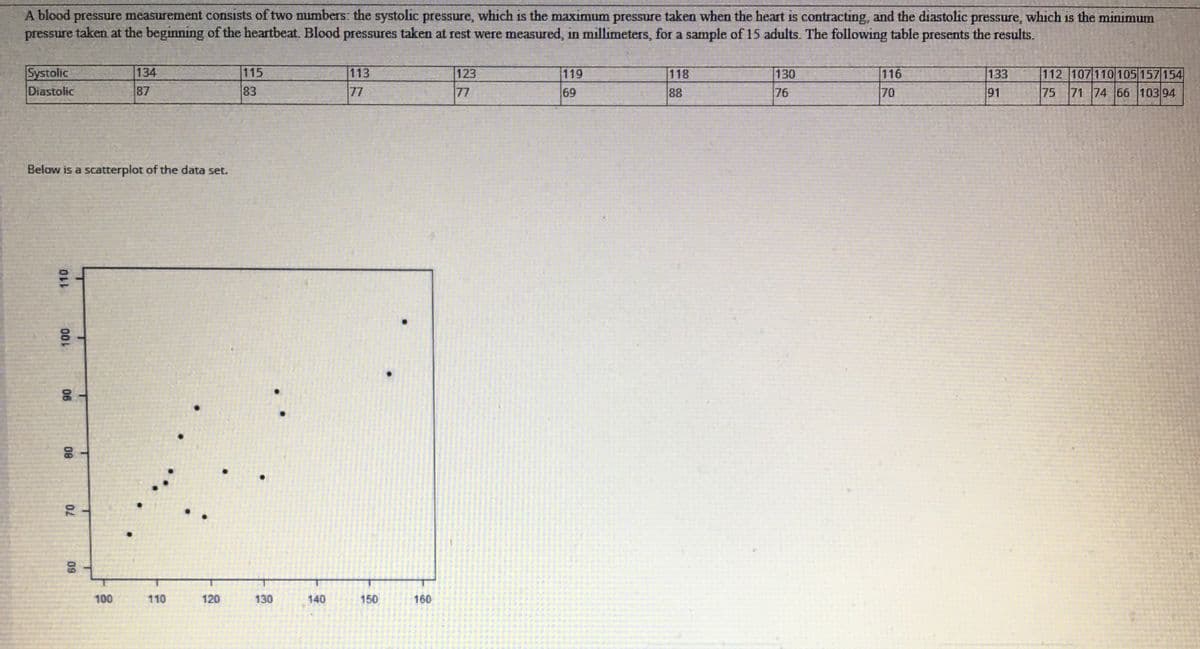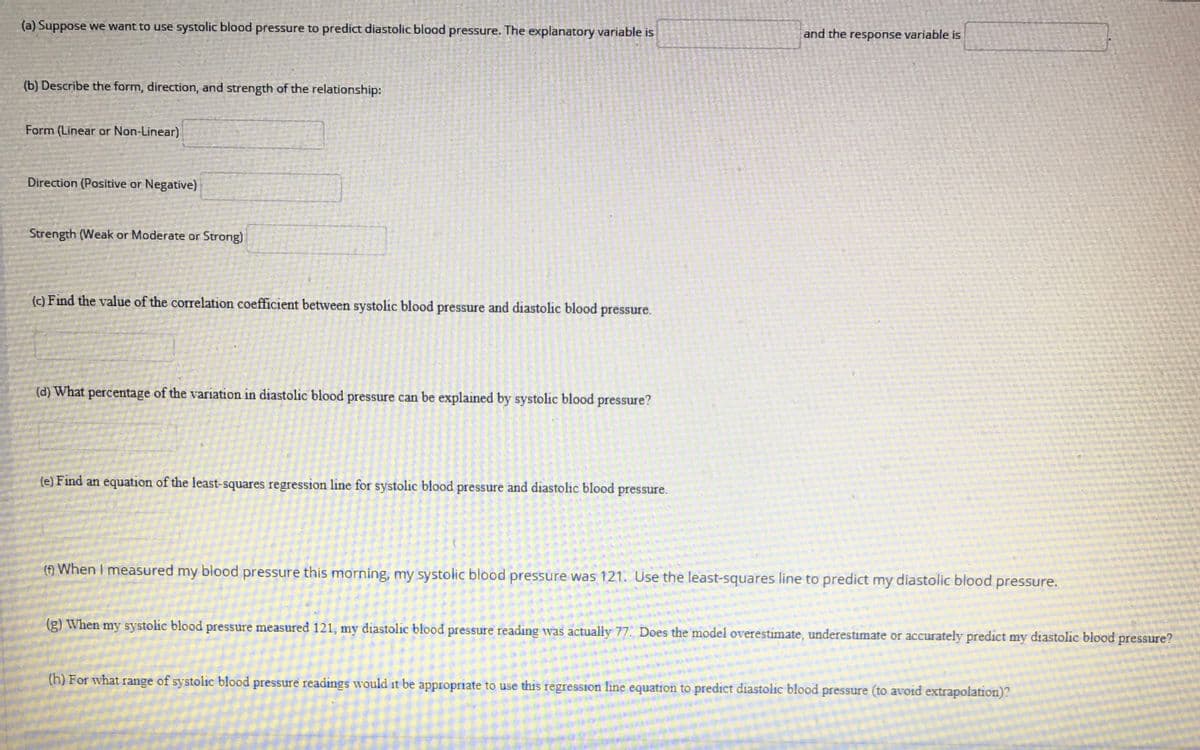(a) Suppose we want to use systolic blood pressure to predict diastolic blood pressure. The explanatory variable is and the response variable is (b) Describe the form, direction, and strength of the relationship: Form (Linear or Non-Linear) Direction (Positive or Negative) Strength (Weak or Moderate or Strong) (c) Find the value of the correlation coefficient between systolic blood pressure and diastolic blood pressure. (d) What percentage of the variation in diastolic blood pressure can be explained by systolic blood pressure? (e) Find an equation of the least-squares regression line for systolic blood pressure and diastolic blood pressure. (9 When I measured my blood pressure this morning, my systolic blood pressure was 121. Use the least-squares line to predict my diastolic blood pressure. (g) When my systolic blood pressure measured 121, my diastolic blood pressure reading was actually 77. Does the model overestimate, underestimate or accurately predict my diastolic blood pressure? (h) For what range of systolic blood pressure readings would it be appropriate to use this regression line equation to predict diastolic blood pressure (to avoid extrapolation)?
Correlation
Correlation defines a relationship between two independent variables. It tells the degree to which variables move in relation to each other. When two sets of data are related to each other, there is a correlation between them.
Linear Correlation
A correlation is used to determine the relationships between numerical and categorical variables. In other words, it is an indicator of how things are connected to one another. The correlation analysis is the study of how variables are related.
Regression Analysis
Regression analysis is a statistical method in which it estimates the relationship between a dependent variable and one or more independent variable. In simple terms dependent variable is called as outcome variable and independent variable is called as predictors. Regression analysis is one of the methods to find the trends in data. The independent variable used in Regression analysis is named Predictor variable. It offers data of an associated dependent variable regarding a particular outcome.


Trending now
This is a popular solution!
Step by step
Solved in 2 steps with 2 images






